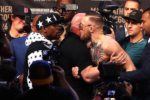We all knew in July of 2016 where this train was going. The signing of Kevin Durant to the Golden State Warriors, who just came off a record-breaking season, left a bad taste in the mouths of many fans. We got what we thought we were getting: a lackluster playoffs, a pre-determined championship, and the consensus that the NBA is becoming unwatchable. We all hoped for an upset story, but this isn’t a fairy tale. It’s the new NBA and could signal a decline in fan’s level of care.
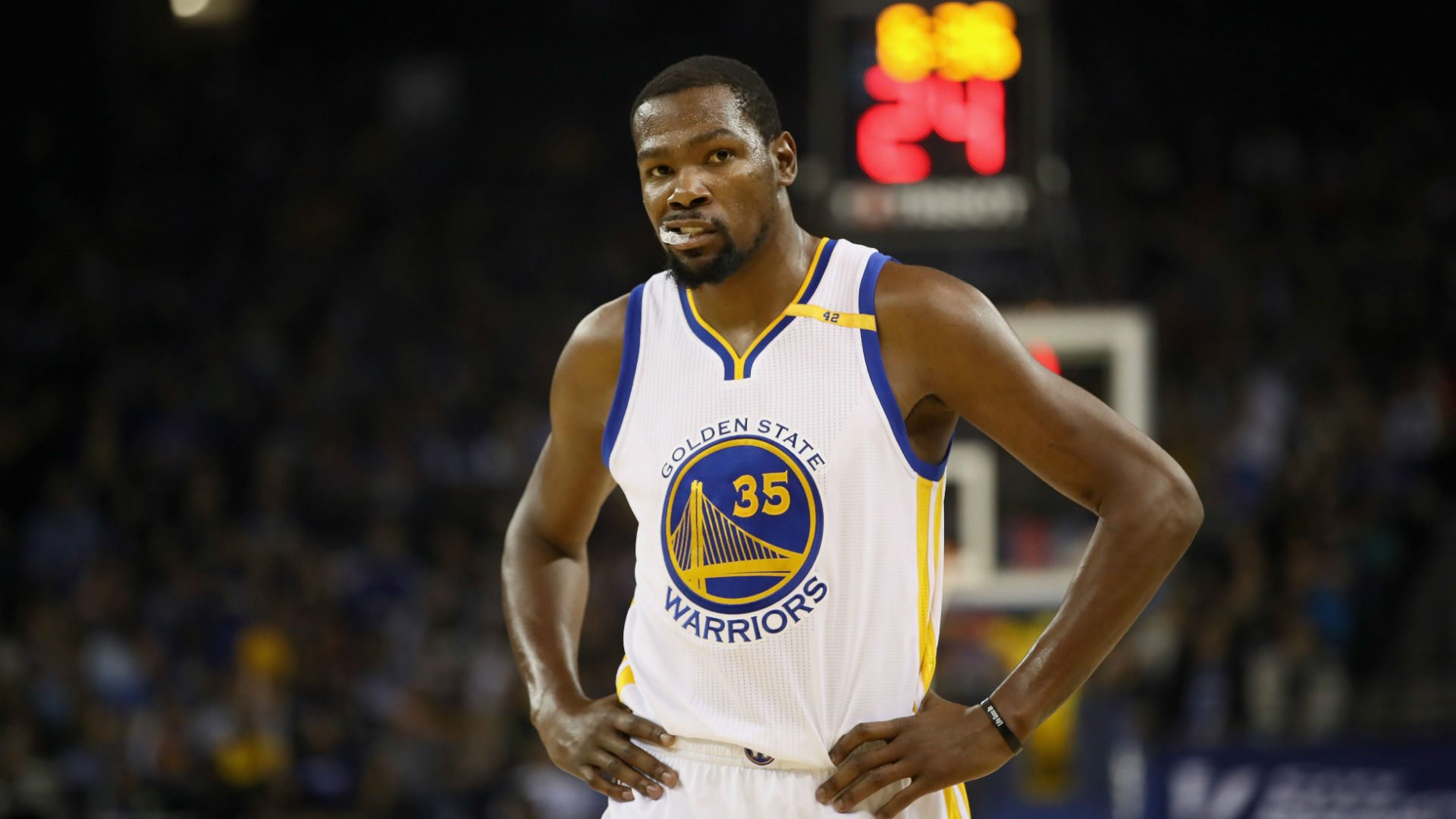
I believe we endure enough: $30 parking at games, $8 hot dogs for each kid, $10 beers and the feeling of walking through a General Emergency drill with civilians to find your $50 seat that is next to the banners hanging from the roof you can barely remember.
I live in a messy world of struggling franchises, rooting for the Chargers, Braves, Pelicans, Carolina Hurricanes and the N.C. State Wolfpack. I am that fan that scours the internet for a glimmer of a rumor and reads feverishly about a third string center that could be a diamond in the rough.
The sarcasm is thick, but the truth is cold here.
The old grainy footage of a few mixed in championships with those franchises is a dose of Tiger Balm on a rusty pickup. I can tell you the last ten years have been rough. But as a loyal fan I have hope every offseason: Philip Rivers might finally have an offensive line, and Trevor Carrick might finally be the key to a revamped defense.
This only highlights my issue with the current NBA: being without hope of the next season just leaves me feeling frustrated. I am an active duty service member and I shy away from politics in public discussions and internet writing. But, when it comes to speaking freely on the thing that can take my mind off those topics, sports, then I say, “Stand-by for heavy rolls as this ship comes about!”
I am from North Carolina where college basketball and NASCAR dominate our sports worlds, and I didn’t grow up with much hockey in my life. But this May and June when we had both the NBA and NHL playoffs, I watched more hockey games than ever. I watched the NHL because I wanted to see the competition and feel excitement, that the NBA didn’t give us! The NHL had a virtual 16 seed reach the Finals, and the NBA had a balanced, experienced Raptors squad get toyed with before getting swept by a team that could barely slow down Kevin Durant and Steph Curry.
Warriors' Kevin Durant w/ thoughts on one-sided playoff games pic.twitter.com/iWV4Jq9DQK
— Ben Golliver (@BenGolliver) May 21, 2017
I went on this NBA rant after Durant’s “Don’t watch” response to a reporter’s question about the quality of competition against the Golden State Snipers. I was floored by this and wondered if the league knows it is alienating fans. I believe we endure enough: $30 parking at games, $8 hot dogs for each kid, $10 beers and the feeling of walking through a General Emergency drill with civilians to find your $50 seat that is next to the banners hanging from the roof you can barely remember. Now a player tells us, “Don’t watch”! The folks that are watching are the league owners. Without fans, how will the owners keep ratings up for the giant TV contracts and personal seat license renewals? After all, this is all about the money, so if anything cuts into the bottom line a solution has to surface.
I don’t believe the league will get back to the days where Magic and Bird would have set picks for the devil before teaming up. This generation of players will take less money to win and get a shot at a legacy-defining championship. You will not fix a new generation or that mentality – and probably shouldn’t. Everyone deserves to put themselves in the best position possible, as I tell the detailer each transfer season – so I believe the focus should be on a structured system to create real NBA parity.
I’m not going to watch a full NBA basketball [game]. It’s not very good basketball. And I love basketball … I want to see competitive games and right now and we’re not getting it.
-Charles Barkley
Blame the CBA
Parity is an enormous word for this league. The NBA Collective Bargaining Agreement (CBA), an agreement between team owners and players signed by the league in December 2016, addresses everything from the player-owner revenue split to roster sizes. It was created in theory to improve the ability for every team to compete for a championship. Sadly, it has inadvertently created a monster.
The current CBA was structured for a team to give two All-NBA-caliber players an extra year on a max deal that no other team can match to keep players with their drafted teams. With rookie salaries staying low, the intent was to foster building a team around your drafted superstar(s) and the youth/veteran mix around them. Under a hard salary cap, where teams absolutely cannot spend more than a designated amount, this formula would have created parity. Yet the NBA’s version of a salary cap meant things didn’t work like that in practice.
The NBA features a “soft cap,” where teams can spend over the salary cap with a dizzying host of exceptions that would make those of us familiar with continuing resolution funding Celtics-green with envy. When there’s no hard cap for spending money, teams that have home-grown superstar(s) in place can stack the deck around them quickly. These tricks – the midlevel exception and biannual exception that don’t count towards the cap, the stretch provision to lessen the effect a bad contract has each year, and the traded player exception that lets teams trade future draft picks to take on money above the cap – are the background wizardry required to capture a championship.

Who has been the best at using these gaps in the rules to create winning teams? The Heat, Spurs, Warriors, and Cavaliers – the only four teams to make the finals since 2013. Smart teams are building squads of X-Men with players on their bench that could start for other teams, meaning there are fewer good players for the remainder of the NBA franchises to try to build competitive rosters with. Make no mistake, smart teams like the Warriors drafted well, planned for every eventuality and didn’t “buy the lot,” but it’s time to look down the street at other leagues and figure out the three steps to fix this problem before the fans jump ship.
Step One: Hard Cap
The NFL has a business model that has fans watching the draft seven months before the season starts and cheering mid-tier free agent signings. Especially if you’re a Jets fan, every year you can wake up the day after the Super Bowl and think, “This is the year!” I believe a hard cap like the NFL’s can right the NBA’s ship, bringing excitement and intrigue back to the league. This will put all teams on a level playing field, and keep fans in the seats of small market teams that are an afterthought in today’s NBA. If three superstars decide to take their talents to the same city to get a ring under a hard cap, the janitors and cheerleaders will be filling up the bench and will keep things more competitive.
A hard cap also keeps teams from trading away their draft picks and then using cash considerations to buy back into the draft at a later point (and a lower base rookie salary). Cash considerations are rare in the NFL since all money goes under the cap, but in the NBA this is an illustrative case of the rich getting richer. For the second straight year, the Warriors bought the 38th pick with cash considerations, effectively restocking their teams while keeping salaries as low as possible to maintain their arsenal of superstars. With a hard cap this becomes impossible, and perhaps the Warriors get worn down during the regular season without the depth Patrick McCaw provides.

Step Two: Shorten the Season
I would also advocate shortening the season by ten games, and turn the first round of the playoffs to a best out of five games. The owners would burn me at the stake if this happened, but it’s the old Broadway policy “leave them wanting more.” This will mitigate players resting during the season, which is black eye to fans that wait for superstars that play a road game in a city near them. To a fan and their kids who planned and saved for that special moment, that player is showing how little they matter in the grand scheme of an NBA season. To military fans who endure multiple moves, high operational and training schedules, low pay and long hours, this is especially disrespectful. Eventually, fans may save their money and catch the highlights on YouTube.
This is shaky ground to owners who need the money from those gate receipts and $10 beers, but are also invested in players that are a breath away from a season ending injury. We don’t ask small boat crews or pilots to routinely run four missions in five nights because the military has come to understand the long-term stress that puts on the minds and bodies of our most important assets, and the NBA should come to the same conclusion. One of the most terrifying sights in sports is LeBron or John Wall or Giannis on two days rest, so why wouldn’t we as fans want to see that more often? These players are professionals who by and large love the game and want to play long enough to build a legacy. Shortening the season drives home the message that that every game counts, for players and fans.

Step Three: New Contract Structures
Finally, get the players to buy off on a new system of free agency that will raise the overall salaries of the majority of players, at the expense of the top five percent of the league. This is the complex step but selling this to the league shouldn’t be too hard. The top ten or fifteen players may lose some of their basketball income, but they would easily make that up in endorsements and the other 95% of NBA players should benefit from this.
- Max contract for one player drafted by the team that no other team can match. Give the franchise a cap relief of 10% of that contract, which should be a huge incentive to draft well and increase the value of a draft picks.
- Mandate incentive-heavy contracts for signed free agents, with a 10% increase toward the salary cap. Let the contracts have less guaranteed money but be stocked with incentives for games played, playoff appearances and accolades like MVP, defensive player of the year or man of the year for helping their community. This will push players to the mantra, “The harder you work the more you earn.” These incentive kickers would count towards the following year’s cap number.
- Establish a special contract type for long-tenured players. Let teams that have a player with longevity of ten years with a franchise to sign a spread-out contract that can be a 25% cap relief and work as a deterrent for aging veterans to become hired guns. This would keep players that fans grew up with and be a revised retirement plan for an aging star. This prevents those injustices of Johnny Unitas in a Chargers jersey for his last season, Michael Jordan playing with the Wizards, and that weird image of Allen Iverson playing for the Memphis Grizzlies to end his great career.
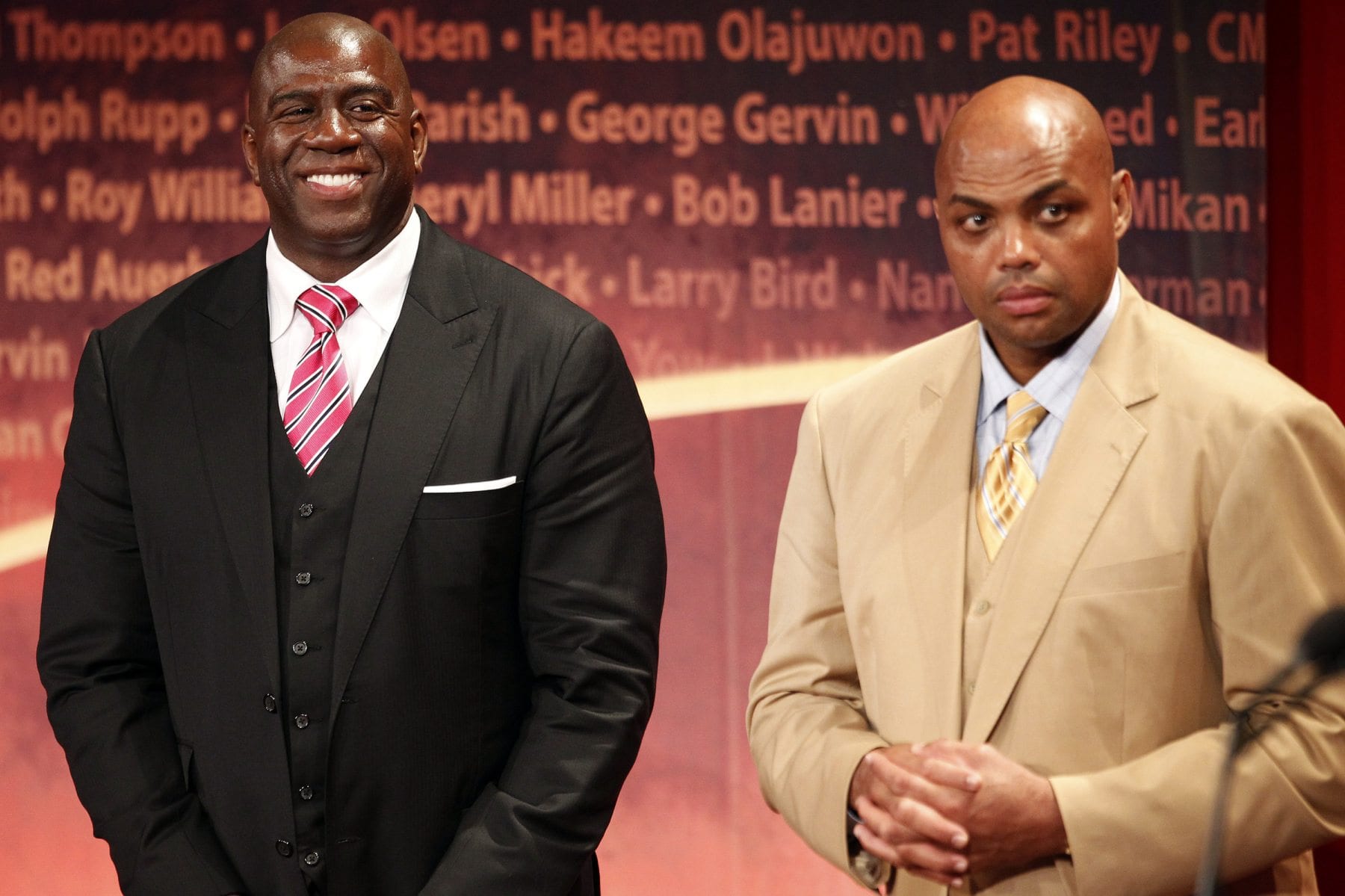
Hope for the Future
The NBA has a proactive commissioner, rosters full of polished players who work to get better each year, charismatic owners and business savvy alumni who will find a solution. One alumnus that has been outspoken on the topic is Charles Barkley. He was quoted as saying, “I’m not going to watch a full NBA basketball [game]. It’s not very good basketball. And I love basketball. There’s only five games I’m watching top to bottom. We want it to be competitive. We don’t want to have four good teams. I want to see competitive games and right now and we’re not getting it.”
When four teams have a real shot at the championship and everyone else is waiting to lose, a regular season game in January doesn’t hold as much value, and businesses with a value gap run the risk of being disrupted. Everyone loses if people treat live sports like grocery shopping and want the experience to come to them via Twitter highlights or YouTube clips. It will be interesting to watch when the next CBA can be opted out of in six years. I will hold out hope, but there needs to be a change soon or the next NBA article will be titled,” The NBA, yeah that’s still being played.”
Matthew Hux, Lima Charlie News
Matthew Hux, is a contributing writer with Lima Charlie News, and is an active duty Chief Boatswain’s Mate in the US Coast Guard. Matthew has served in many mission sets from Aids to Navigation, Law Enforcement and Search and Rescue. Chief Hux was a responder in New Orleans for the Hurricane Katrina response. Matthew is a contributing sports writer and has the dubious misfortune of being a super fan of struggling sports franchises such as the Los Angeles Chargers, New Orleans Pelicans, Atlanta Braves and Carolina Hurricanes. The views expressed by Matthew are his own and are not to be construed as official or reflecting the views of the Commandant or of the U.S. Coast Guard.
Lima Charlie provides global news, insight & analysis by military veterans and service members Worldwide.
For up-to-date news, please follow us on twitter at @LimaCharlieNews

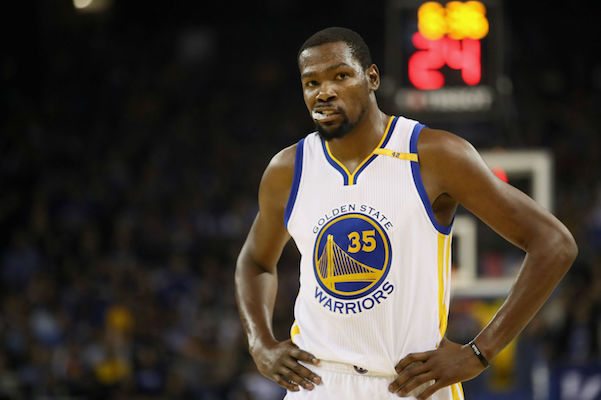
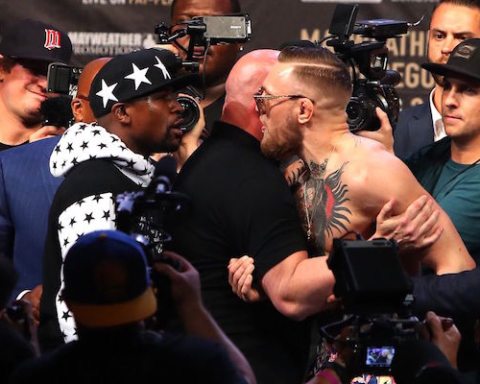

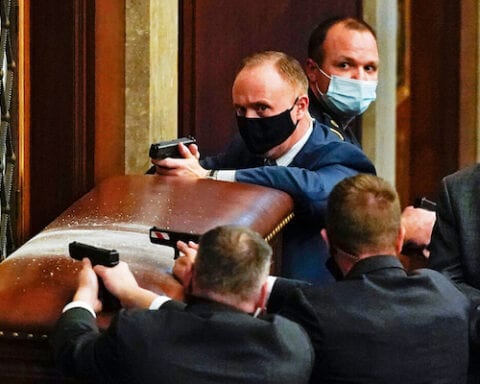


![Image Memorial Day may soon be a remembrance of democracy and those who had the courage to defend it [Lima Charlie News]](https://limacharlienews.com/wp-content/uploads/2018/05/Memorial-Day-may-soon-be-a-remembrance-of-democracy-and-those-who-had-the-courage-to-defend-it-Lima-Charlie-News-480x384.png)
![The Mind of Bolton - AUMF and the New Iran War [Lima Charlie News]](https://limacharlienews.com/wp-content/uploads/2019/05/Inside-the-mind-of-Bolton-Lima-Charlie-News-main-01-480x384.png)
